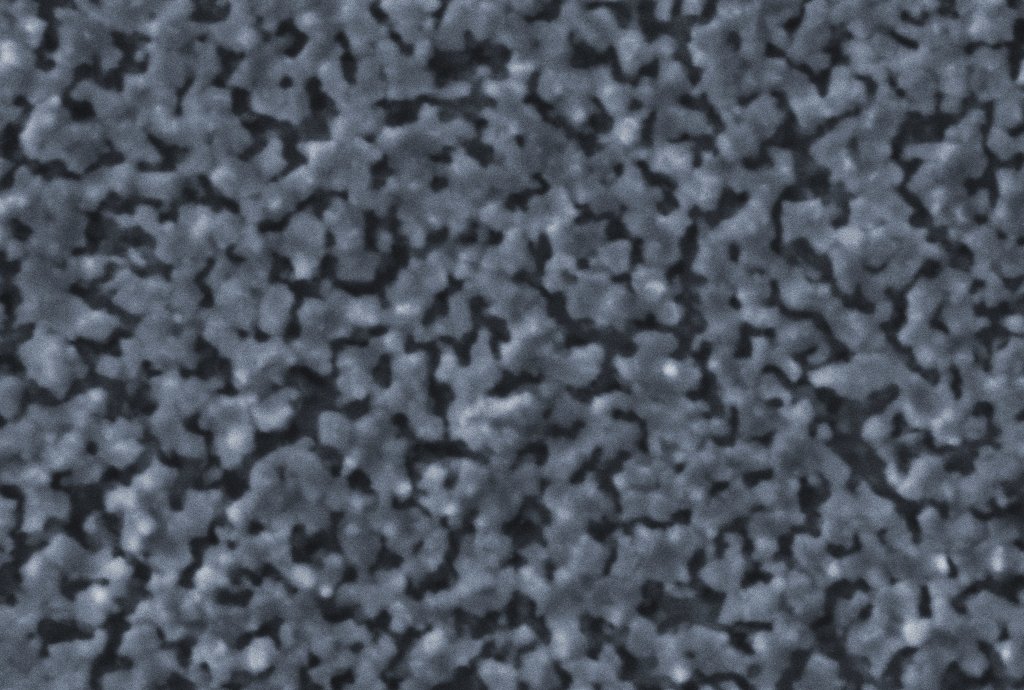Porous Surface Structures
In the production of inorganic nanostructures, organic compounds are often used as matrices. These are incorporated into the material during synthesis, thus affecting the structure and properties of the product. By subsequently removing the organic matrix, it is finally possible to produce porous materials.
In a joint project, the "Inorganic Functional Materials" group (Tiemann) and the "Organic and Macromolecular Chemistry" group (Kuckling) produce porous metal oxides by using hydrogels. Such a hydrogel consists of a crosslinked organic polymer. It swells up in water and can then serve as a "scaffold" (matrix) in the formation of the inorganic product. The result is a hybrid material in which the organic polymer is "incorporated" into the inorganic solid. When the polymer is removed, it leaves behind channels and cavities of a few nanometers in diameter. Since the hydrogel can be anchored on suitable surfaces, thin porous layers can be produced in this way.
Related Publications (selection):
- Nanoporous Aluminium Oxide Micropatterns Prepared by Hydrogel Templating
Z. Chen, D. Kuckling, M. Tiemann
Nanotechnology 31 (2020) 445601 - Hydrogels as Porogens for Nanoporous Inorganic Materials
C. Weinberger, D. Kuckling, M. Tiemann
Gels 4 (2018) 83 - Porous Aluminum Oxide and Magnesium Oxide Films by Using Organic Hydrogels as Structure Matrices
Z. Chen, D. Kuckling, M. Tiemann
Nanomater. 8 (2018) 186


